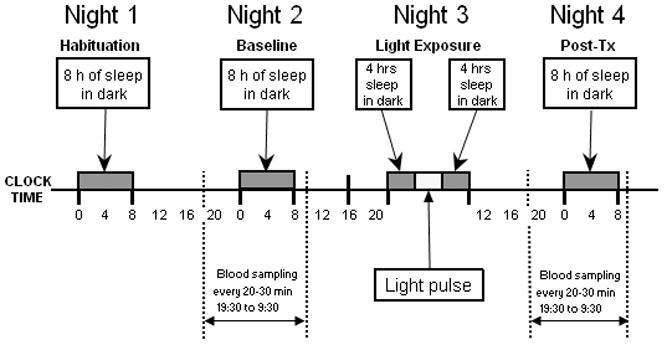Figure 1.

Schematic of the experimental protocol. Subjects were admitted for 4 nights and 3 days under constant conditions during daytime hours with 8 hours sleep in dark at their habitual time (dark bars). Half of the subjects also participated in a 4 night/3 day dim control condition (see methods). Blood samples were taken throughout the baseline and post-treatment nights to assess light-induced changes in the circadian melatonin rhythm. On the third night, subjects were exposed to 4 hours of dim control or bright light (3,500 lux for 3 h, plus 1 hour of intermediate illumination), beginning 5 hours before the temperature minimum.
